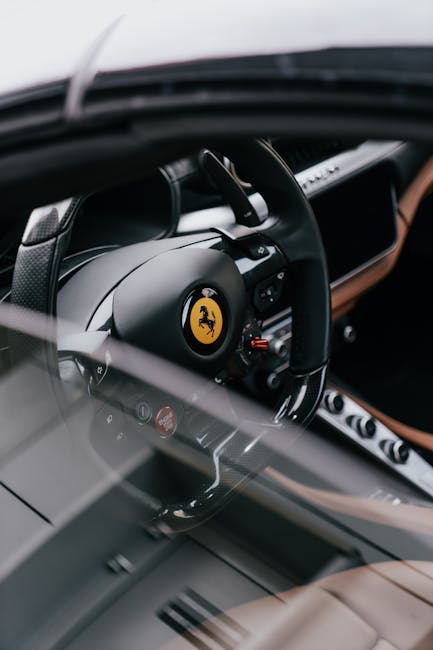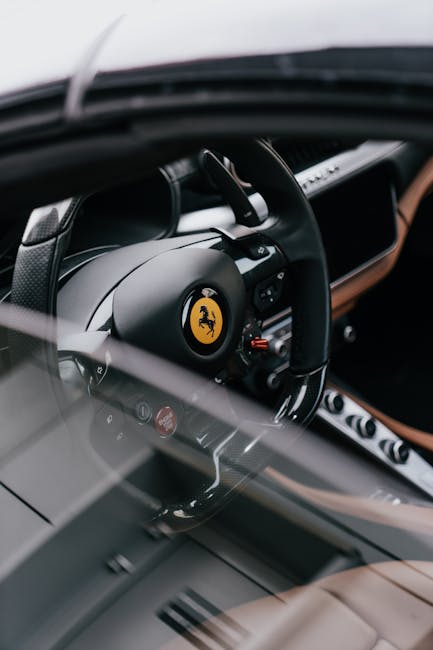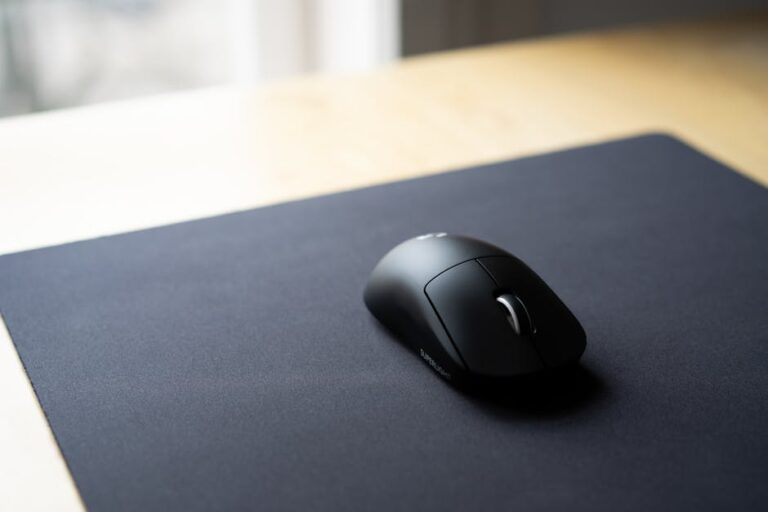Sim Racing Setup: Guides for Beginners
Sim Racing Setup: Guides for Beginners
Sim racing has transformed from a casual gaming hobby into a full-fledged motorsport simulation experience. Whether you’re a beginner looking to build your first racing setup or aiming to upgrade your current one, understanding how each component works together is key. In this guide, we’ll walk you through everything you need to know to build a realistic and comfortable sim racing setup that fits your budget and goals.
What Is a Sim Racing Setup?
A sim racing setup is a collection of equipment designed to mimic the feel and control of real-life car racing. It typically includes a racing wheel, pedals, seat, cockpit, display, and simulation software. The goal is to provide a realistic driving experience with accurate feedback, handling, and immersion. Sim racing setups are used by casual players, esports competitors, and even professional drivers for training and practice.
Core Components of a Sim Racing Setup
1. Racing Wheel
Logitech G923 Racing Wheel and Pedals
Logitech G923 Racing Wheel and Pedals, TRUEFORCE Force Feedback, Real Leather + Logitech G Driving Force Shifter - Xbox X|S, Xbox One, PC, Mac - Black
Check Price on Amazon.comMOZA Trucking Bundle 4PCS PC Gaming Racing
MOZA Trucking Bundle 4PCS PC Gaming Racing Simulator Kit: R5 5.5Nm Direct Drive Wheel Base, 400mm TSW Truck Wheel, SR-P Lite Pedals and Wheel Clamp for PC, Black
Check Price on Amazon.comLogitech G923 Racing Wheel and Pedals
Logitech G923 Racing Wheel and Pedals for Xbox Series X|S, Xbox One and PC featuring TRUEFORCE up to 1000 Hz Force Feedback, Responsive Pedal, Dual Clutch Launch Control, and Genuine Leather Wheel Cover
Check Price on Amazon.comLogitech G920 Driving Force Racing Wheel and Floor Pedals
Logitech G920 Driving Force Racing Wheel and Floor Pedals, Real Force Feedback, Stainless Steel Paddle Shifters, Leather Steering Wheel Cover for Xbox Series X|S, Xbox One, PC, Mac - Black
Check Price on Amazon.comLogitech G29 Driving Force Racing Wheel and Floor Pedals
Logitech G29 Driving Force Racing Wheel and Floor Pedals, Real Force Feedback, Stainless Steel Paddle Shifters, Leather Steering Wheel Cover for PS5, PS4, PC, Mac - Black
Check Price on Amazon.comThe racing wheel is the heart of your sim racing setup. It determines how accurately you can feel the car’s behavior and road texture. There are three main types:
- Gear-Driven Wheels: Affordable but noisier, offering less smooth feedback.
- Belt-Driven Wheels: Provide smoother and quieter force feedback suitable for mid-range users.
- Direct-Drive Wheels: The most advanced option with powerful, precise feedback directly from the motor shaft, used by professionals.
When choosing a wheel, look for good rotation range (900° or more) and strong force feedback. Brands like Logitech, Thrustmaster, Fanatec, and Moza offer great options for different budgets.
2. Pedals
MOZA CRP2 Clutch Pedal for Sim Racing Driving Video Games
MOZA CRP2 Clutch Pedal for Sim Racing Driving Video Games
Check Price on Amazon.comLogitech G923 Racing Wheel and Pedals
Logitech G923 Racing Wheel and Pedals for Xbox Series X|S, Xbox One and PC featuring TRUEFORCE up to 1000 Hz Force Feedback, Responsive Pedal, Dual Clutch Launch Control, and Genuine Leather Wheel Cover
Check Price on Amazon.comGenuine Mazda Parts - Pedal,Clutch (FEY5-41-30XB), Assorted, One Size
Genuine Mazda Parts - Pedal,Clutch (FEY5-41-30XB), Assorted, One Size
Check Price on Amazon.comMOZA SR-P Car Driving Simulator Clutch Pedal for PC Gaming
MOZA SR-P Car Driving Simulator Clutch Pedal for PC Gaming
Check Price on Amazon.comJDMSPEED Clutch Pedal Assembly Diesel YC3Z7B633BA Replacement
JDMSPEED Clutch Pedal Assembly Diesel YC3Z7B633BA Replacement for Ford Super Duty F250 F350 F450 F550 7.3L 1999 2000 2001 2002 2003 Replace YC3Z-7B633-BA Clutch Foot Pedals Assy
Check Price on Amazon.comSim Racing Pedals are just as important as the wheel for realism and control. High-quality pedals give precise input for acceleration, braking, and clutch control. Types include:
- Potentiometer Pedals: Basic entry-level option using sensors to detect movement.
- Load Cell Pedals: Measure actual pressure on the pedal for realistic braking feel.
- Hydraulic Pedals: Used in professional setups for the most accurate replication of real car hydraulics.
Beginners should prioritize good brake feel, as braking accuracy significantly impacts lap times and consistency.
3. Sim Racing Cockpit or Rig
The cockpit or rig holds your wheel, pedals, and seat in a stable, ergonomic position. It’s essential for comfort and performance. There are three main styles:
- Wheel Stands: Compact and portable, great for small spaces or beginners.
- Fixed Rigs: More stable with solid frames for consistent positioning.
- Aluminum Profile Rigs: Modular and highly adjustable, ideal for enthusiasts and future upgrades.
A sturdy rig prevents unwanted movement and helps maintain correct driving posture during long races.
4. Racing Seat
Your seat directly affects your comfort and immersion. Look for a design that supports your back and matches your preferred racing style:
- Bucket Seats: Replicate real race car seats and keep you firmly in place.
- GT-Style Seats: Offer comfort for longer sessions and casual racers.
Ensure the seat is adjustable and well-cushioned, especially if you plan long endurance sessions.
5. Shifter and Handbrake
If you want a more authentic experience, adding a shifter and handbrake elevates realism. Choose between:
- H-Pattern Shifters: Simulate manual transmission cars, perfect for classic or touring car simulations.
- Sequential Shifters: Used for rally or modern race cars with up/down shifting.
A handbrake is optional but essential for rally, drift, or off-road racing games.
6. Display Setup
Your display defines how immersive your racing experience feels. Common options include:
- Single Monitor: Easy setup, ideal for beginners.
- Triple Monitor: Expands field of view for better peripheral awareness.
- Ultrawide Monitor: Balanced middle-ground between single and triple screens.
- VR Headset: Offers total immersion, though requires powerful hardware.
A high refresh rate and low input lag are crucial for smooth visuals. Mount your display close to your wheel for realistic eye alignment.
7. PC or Console
Your sim racing platform can be either a gaming PC or console. PCs offer more flexibility, customization, and access to simulation-grade software, while consoles provide simplicity and cost-effectiveness. For PC builds, focus on:
- GPU: Capable of rendering realistic graphics smoothly (e.g., RTX 4070 or better).
- CPU: Multi-core processor for stable performance in large grid races.
- RAM: At least 16GB for modern racing sims.
Ensure your hardware meets or exceeds the game’s recommended specifications for the best experience.
8. Audio System or Headset
Sound is often underestimated in sim racing but plays a huge role in immersion. Engine sounds, tire screeches, and track feedback help drivers react naturally. You can choose between:
- High-Quality Headset: Provides directional sound and isolates external noise.
- Surround Sound Speakers: Great for full-room setups, enhancing realism.
Consider adding tactile transducers (bass shakers) for vibration feedback that simulates engine rumble and road texture.
9. Sim Racing Accessories
Accessories elevate your setup to professional standards. Some popular additions include:
- Racing Gloves and Shoes: Improve grip and pedal precision.
- Button Boxes: Offer quick access to car functions like lights, wipers, or pit requests.
- Motion Platforms: Provide physical movement to simulate acceleration, braking, and cornering.
- Wind Simulators: Add airflow effects that react to vehicle speed for realism.
Software and Simulation Platforms
The software determines how realistic your driving feels. The best racing simulators provide detailed physics, realistic tire models, and advanced telemetry. Popular titles include:
- iRacing: Focused on competitive online racing and precision physics.
- Assetto Corsa and Assetto Corsa Competizione: Known for modding, customization, and GT racing accuracy.
- rFactor 2: Professional-level physics and weather simulation.
- Automobilista 2: Balanced realism with dynamic track surfaces.
- Gran Turismo 7 / F1 24: Console-based options with great accessibility.
Always calibrate your wheel and pedals before racing, and adjust force feedback strength to suit your comfort level.
How to Build Your Own Sim Racing Setup
Step 1: Define Your Budget and Space
Decide how much you’re willing to invest. A simple starter setup can cost around $300–$700, while a high-end build can exceed $5,000. Also, measure your available space to determine whether a compact stand or a full rig fits better.
Step 2: Start with Essentials
Begin with a wheel, pedals, and a sturdy mounting solution. Focus on learning driving techniques and improving consistency before expanding your setup.
Step 3: Upgrade Over Time
Gradually add accessories like a shifter, better display, or motion system as you gain experience. Sim racing is a long-term hobby where small upgrades make a big difference.
Step 4: Optimize Ergonomics
Adjust seat position, wheel height, and pedal distance for natural comfort. Proper ergonomics reduce fatigue and enhance reaction time.
Step 5: Test and Tune
Once assembled, test your setup in different games and adjust force feedback, steering angle, and pedal sensitivity for accuracy.
Common Mistakes to Avoid
- Buying incompatible parts or neglecting mount stability.
- Ignoring comfort and ergonomics during long sessions.
- Overspending too early without knowing personal preferences.
- Skipping software calibration or FFB fine-tuning.
FAQ: Sim Racing Setup for Beginners
What is the best sim racing setup for beginners?
A simple setup with a belt-driven wheel (like Logitech G923 or Thrustmaster T248), load cell pedals, and a stable wheel stand is ideal for newcomers.
How much does a full sim racing setup cost?
Basic setups start around $300–$500, mid-range around $1,000–$2,000, and premium setups can exceed $5,000.
Can I build a sim racing setup under $500?
Yes, by combining a budget wheel, pedals, and an adjustable stand, you can enjoy an immersive experience without breaking the bank.
What’s the difference between sim racing and arcade racing?
Sim racing prioritizes realistic physics and driving mechanics, while arcade racing focuses on fun, speed, and simplicity without real-world accuracy.
Is VR worth it for sim racing?
VR offers unmatched immersion, but it requires a powerful PC and adjustment to motion comfort. It’s highly recommended for serious sim racers.
Conclusion
Building a sim racing setup is an exciting journey that brings you closer to the world of motorsport. Start small, focus on quality and comfort, and expand as your passion grows. With the right combination of hardware, software, and tuning, you can experience the thrill of racing from the comfort of your home — no driver’s license required.

My name is Michael “Mick” Carter, and I’m a dedicated sim racing enthusiast with a deep love for motorsport. I first discovered sim racing in 2015 when a friend introduced me to a Logitech G27 and Assetto Corsa—an experience that immediately hooked me. Since then, I’ve gone from basic gear to advanced direct drive setups, VR headsets, and custom racing rigs, constantly refining my driving technique and equipment.
I mainly race in iRacing, ACC, and rFactor 2, focusing on GT3 endurance and open-wheel events. I’m not a professional driver—I’m simply someone who enjoys the craft of racing: learning car behavior, improving lap times, and battling for position with respect and skill.
I share what I’ve learned so others can build setups they enjoy and grow their own passion for sim racing. For me, the joy is in improving, one race at a time.
Owner at SimRacingCockpits.Com















